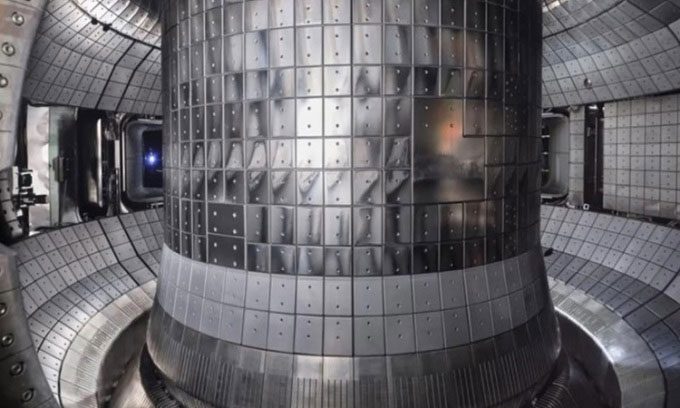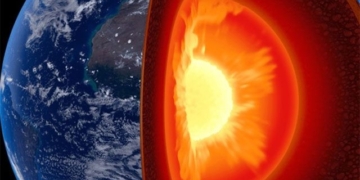With the new tungsten divertor, researchers hope to operate the fusion reactor for 300 seconds at 100 million degrees Celsius by 2026.
KSTAR, the artificial sun of the Korea Fusion Energy Institute (KFE), has completed a significant modification that enables the device to operate longer at higher temperatures, Interesting Engineering reported on December 29. KSTAR stands for Korea Superconducting Tokamak Advanced Research, an advanced fusion reactor built in 2007. The modification includes the installation of a newly developed tungsten divertor, allowing KSTAR to operate for extended periods while maintaining plasma at temperatures exceeding 100 million degrees Celsius, according to KFE.

Core of the KSTAR reactor in South Korea. (Photo: KFE).
The research team reported that they completed a plasma experiment with the reactor equipped with the new divertor on December 21. In 2021, KSTAR set a new record by running at one million degrees Celsius and maintaining superheated plasma for 30 seconds.
Fusion reactions are similar to the processes occurring in the core of the sun, generating abundant energy. Researchers use tokamaks, a special type of reactor on Earth with extremely powerful magnets, to control superheated plasma. This plasma, heated to millions of degrees Celsius, causes atoms to collide and form heavier nuclei, releasing sustainable energy that could help humanity use less fossil fuel and combat climate change.
The divertor is a crucial component located at the bottom of the vacuum chamber in the fusion device. It plays an essential role in handling exhaust gases and impurities from the reactor while enduring the highest surface thermal stress. According to the research team, the development and deployment of a heat-resistant divertor are vital due to its key function.
Initially, KSTAR used a carbon divertor. However, the increased performance and extended operational time at 100 million degrees Celsius exceeded the thermal throughput limits of the carbon divertor. This prompted the research team to develop a tungsten divertor. As a result, they completed the first prototype of the tungsten divertor in 2021. The reactor then underwent a meticulous installation process that lasted over a year, starting in September 2022.
The newly installed divertor is a sophisticated system consisting of 64 boxes made from solid tungsten. These boxes cover the entire bottom of the vacuum chamber, forming a robust barrier against thermal stress in the fusion environment. The advanced design addresses the thermal challenges faced by the previous carbon divertor. According to the research team, it represents a significant advancement that enhances the performance and longevity of the KSTAR reactor at extreme temperatures.
Thanks to its outstanding characteristics, including a high melting point, tungsten has become the most suitable material for the divertor. The research team noted that the material choice brings about significant improvements, with a thermal throughput limit that is double that of the carbon divertor, reaching 10 MW/m².
The plasma experiments inside the newly installed tungsten divertor at KSTAR are expected to continue until February 2024. The primary goals include testing stable operational conditions within the tungsten divertor and successfully reproducing plasma at temperatures of 100 million degrees Celsius. With this new upgrade, the research team hopes to extend the reactor’s operating time to 300 seconds at ion temperatures above 100 million degrees Celsius by the end of 2026.




















































